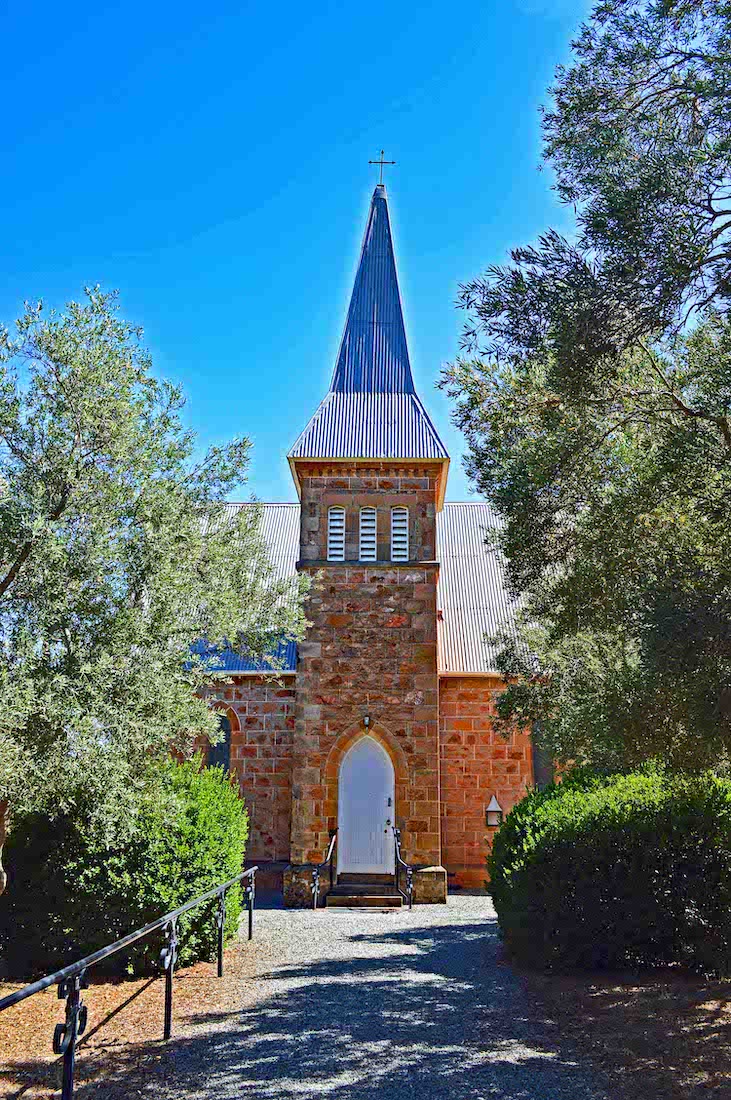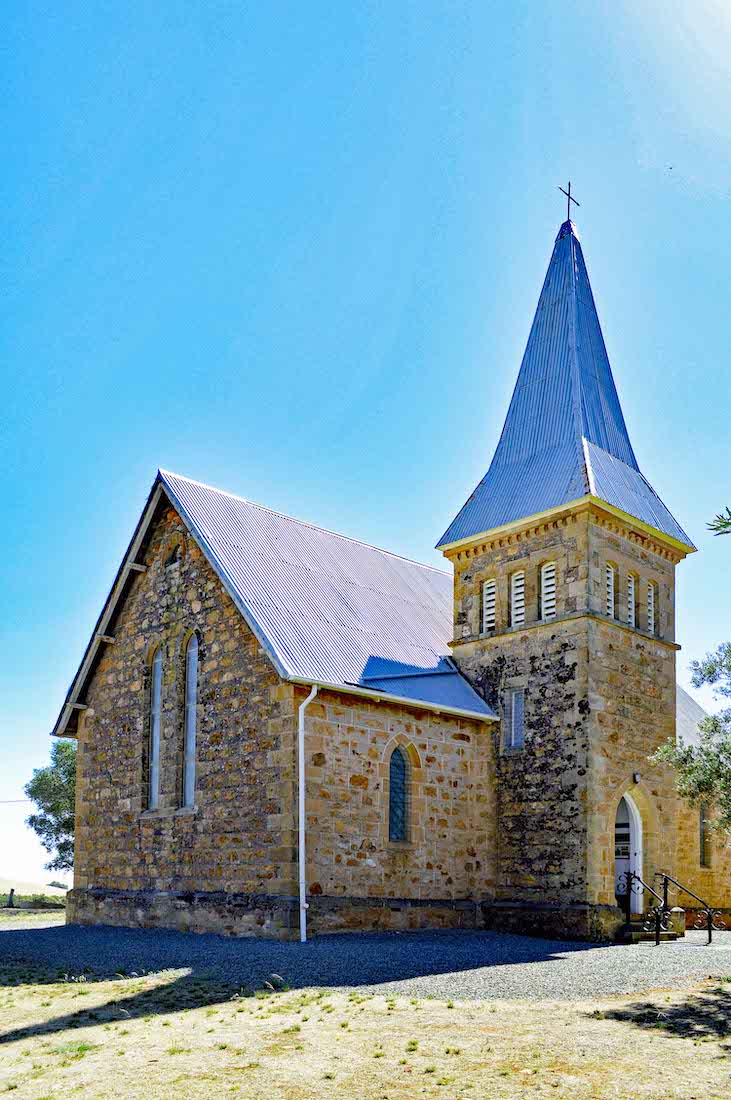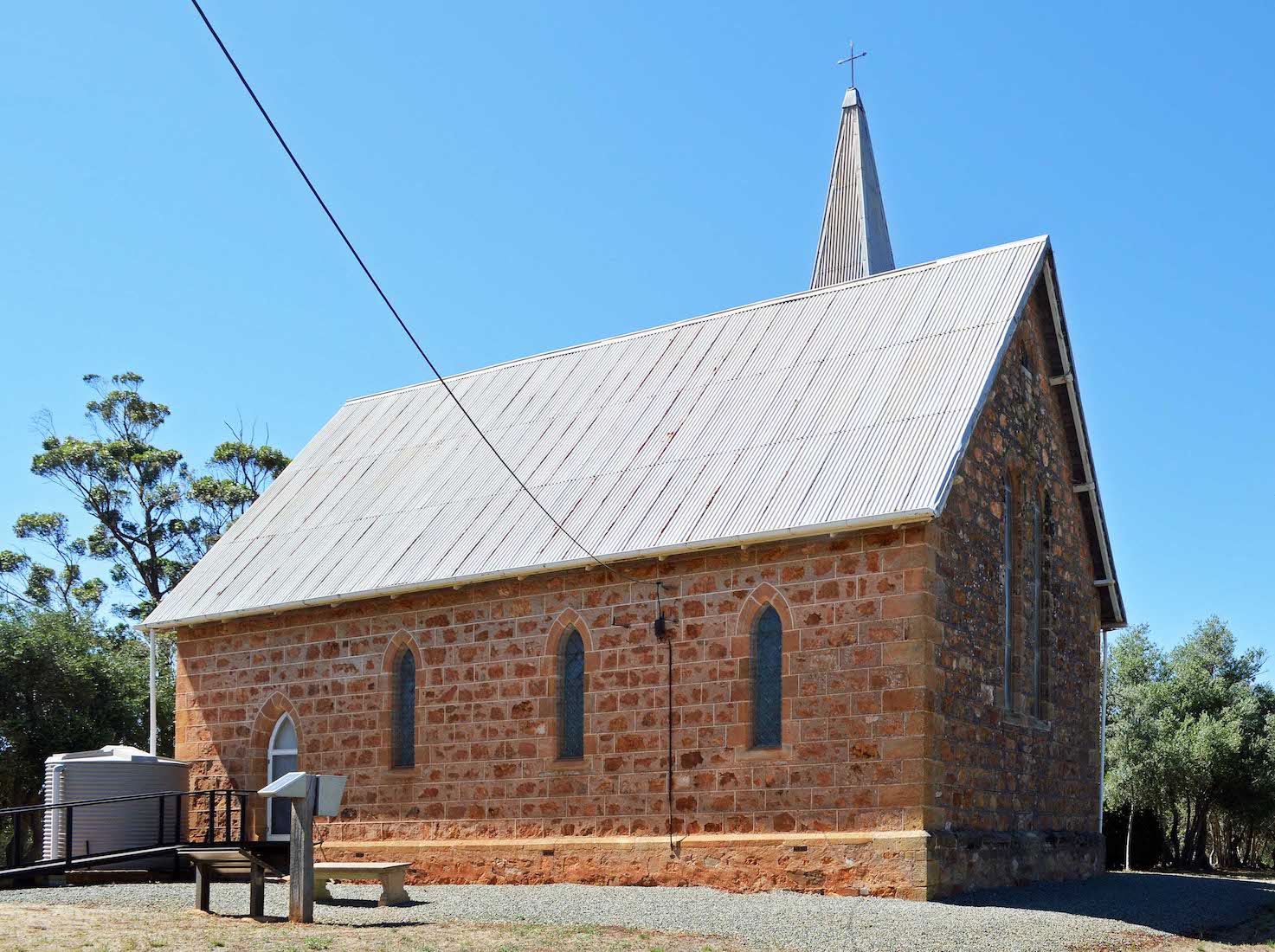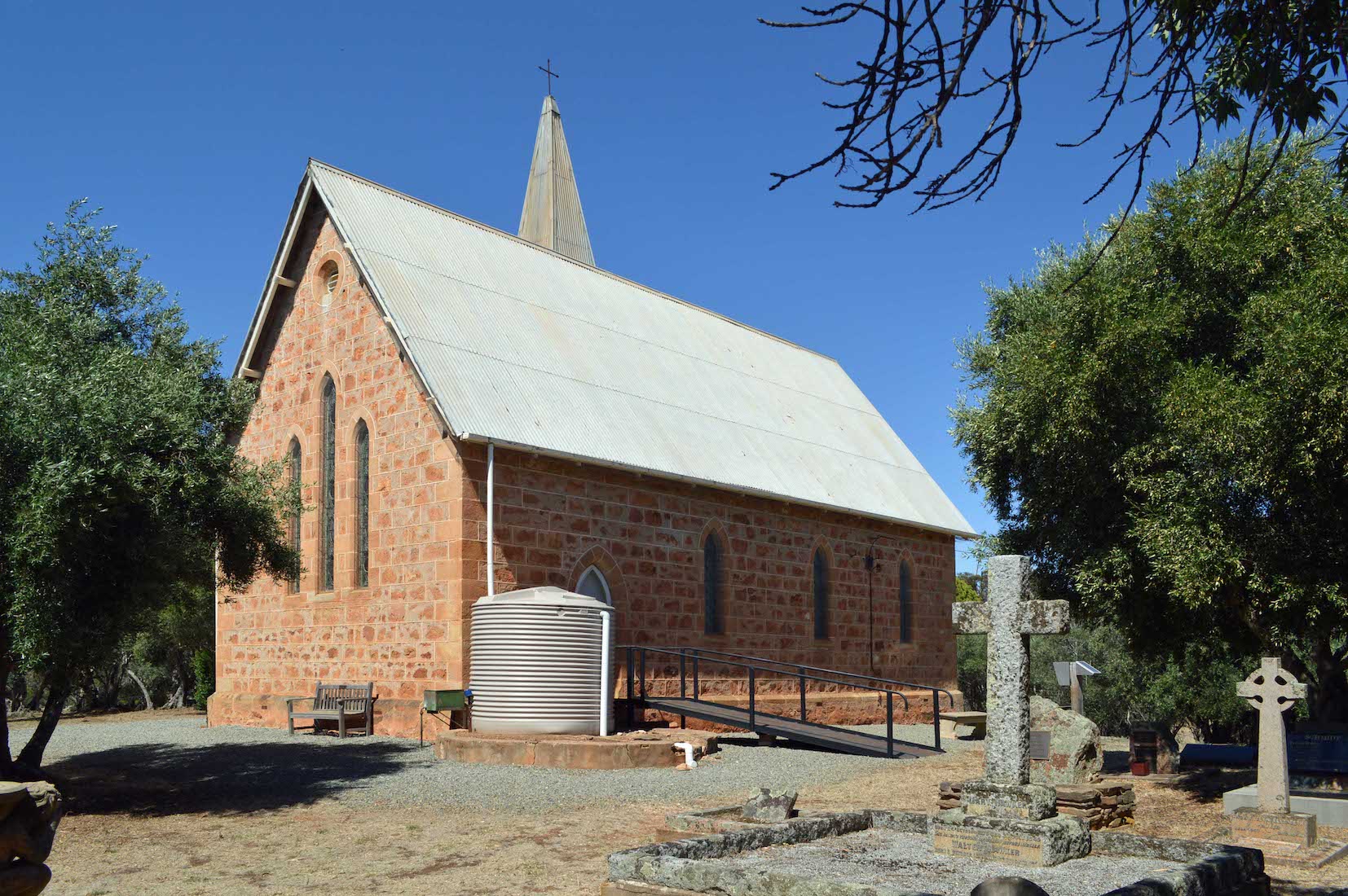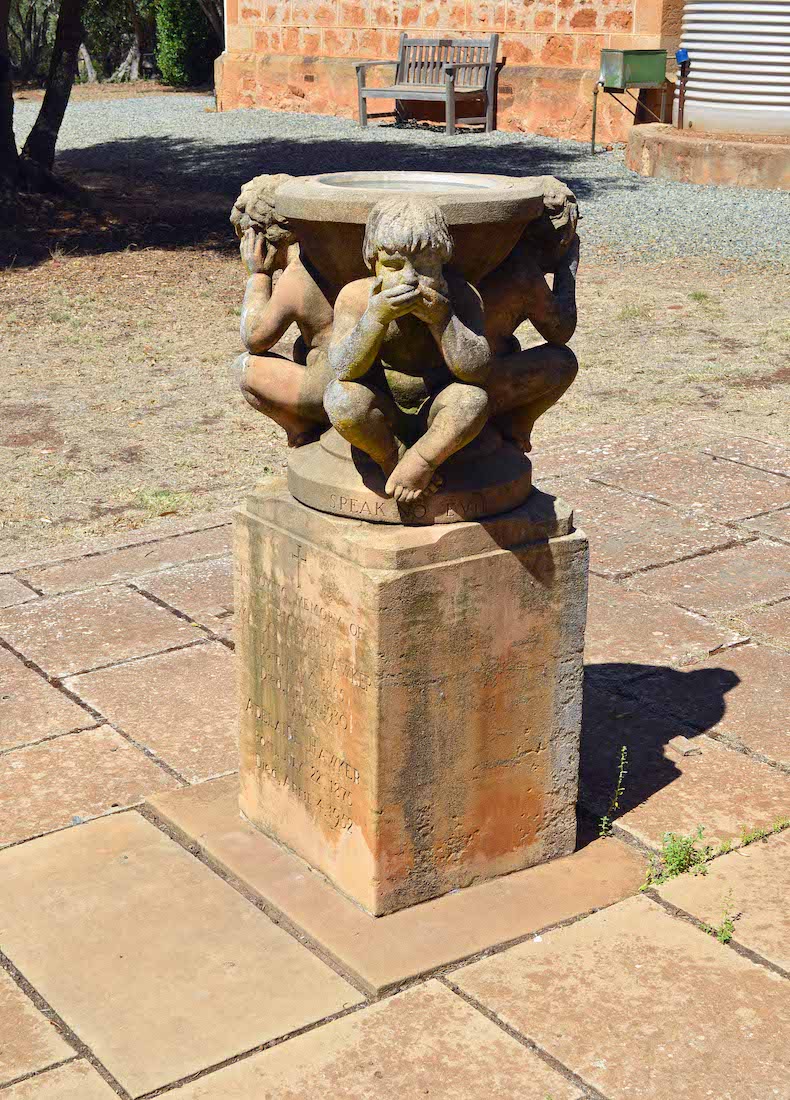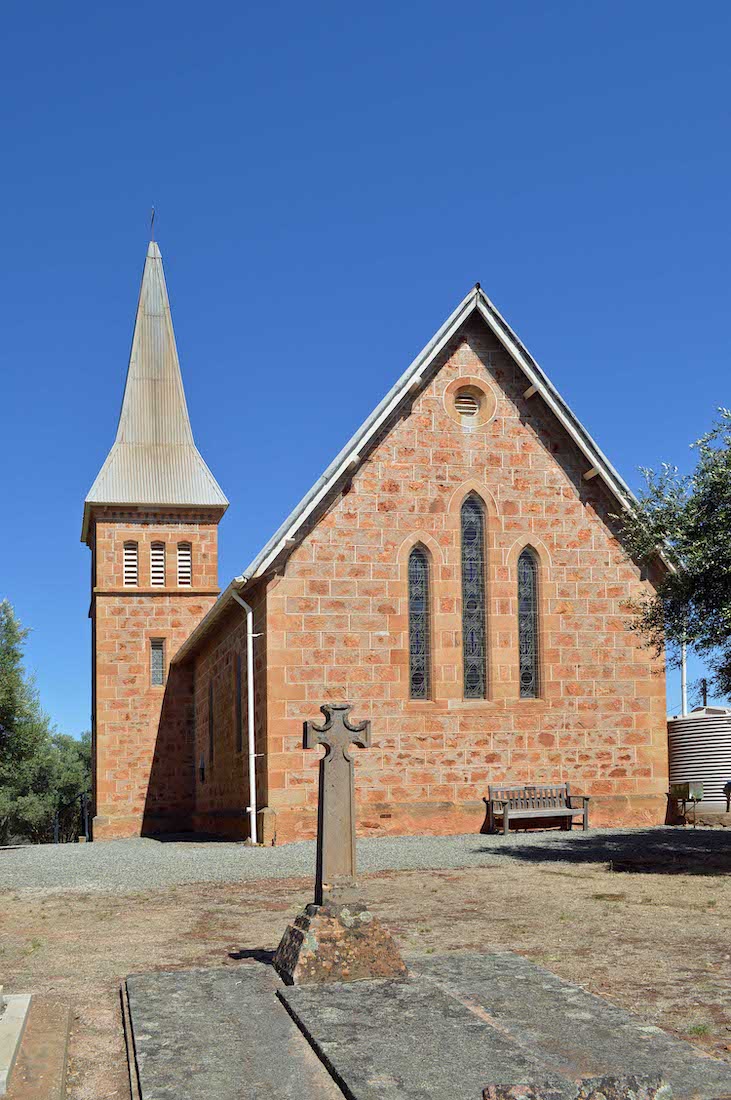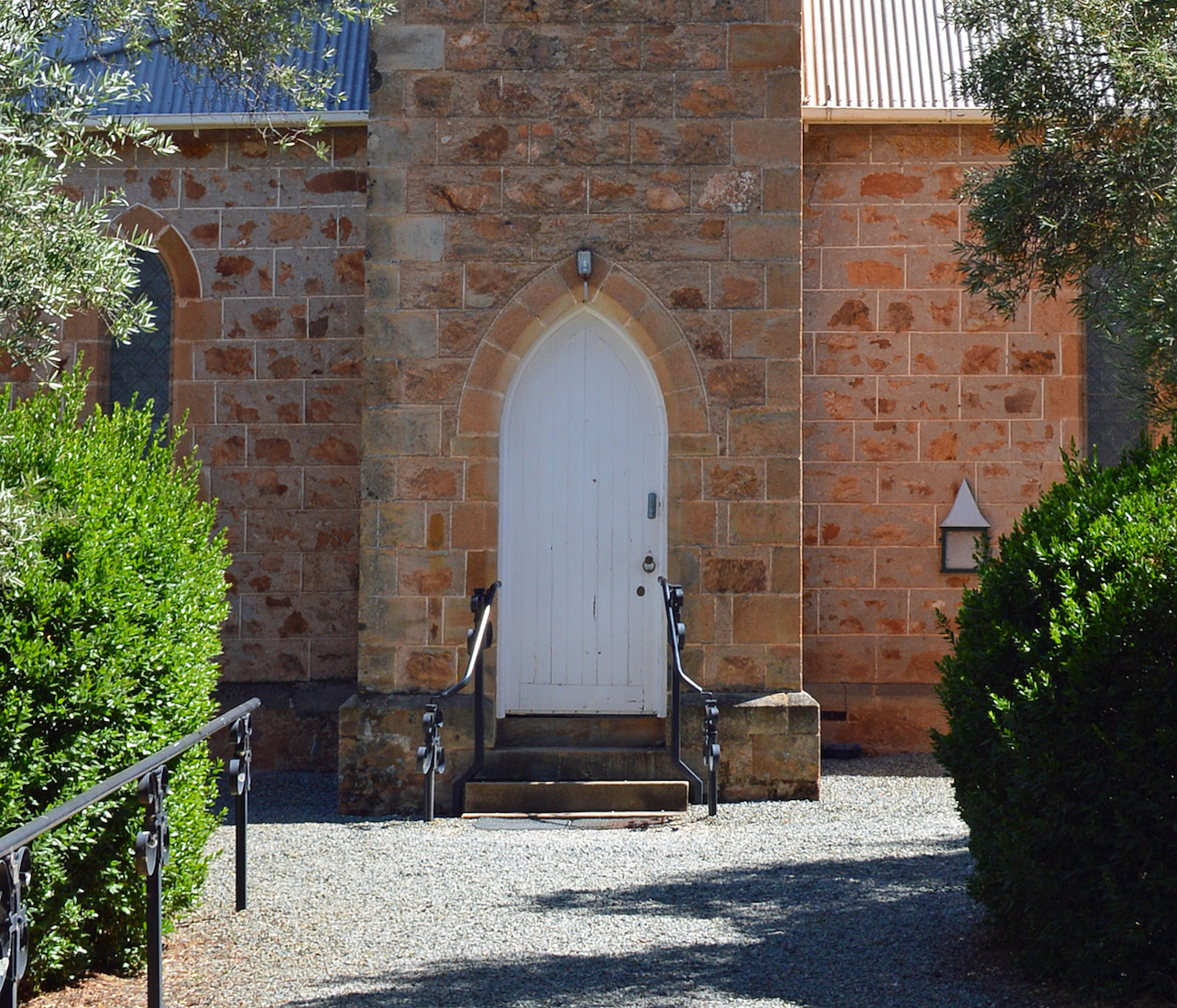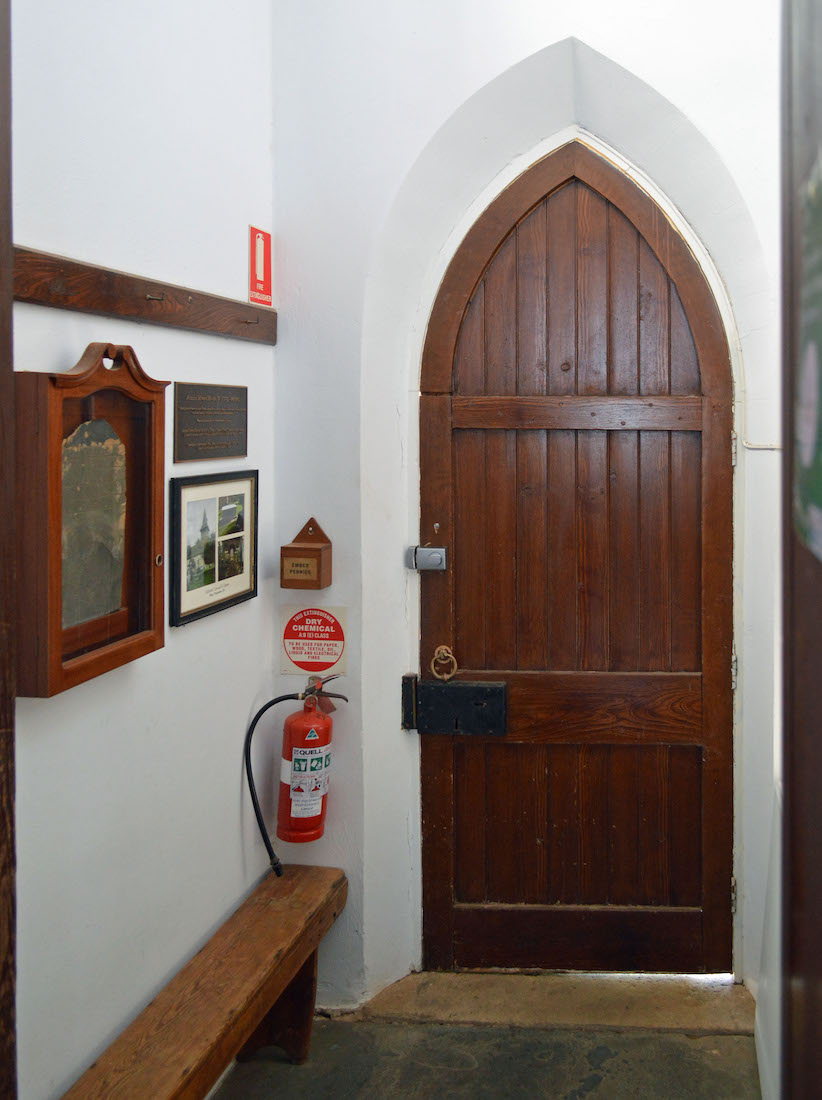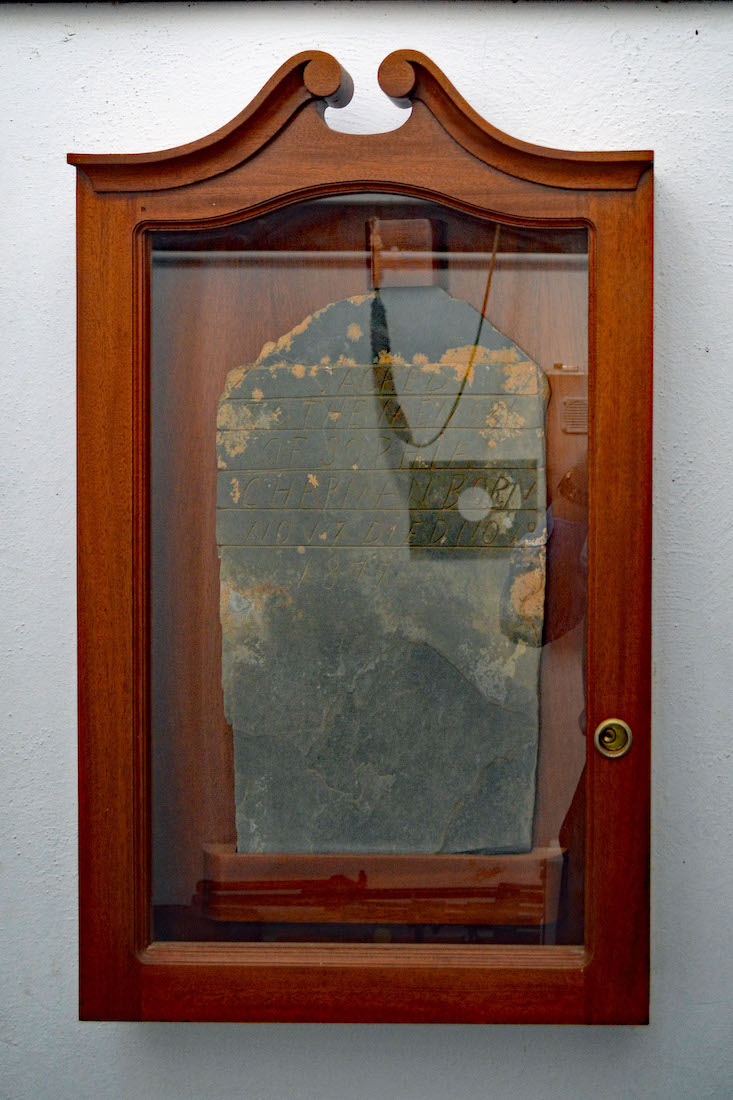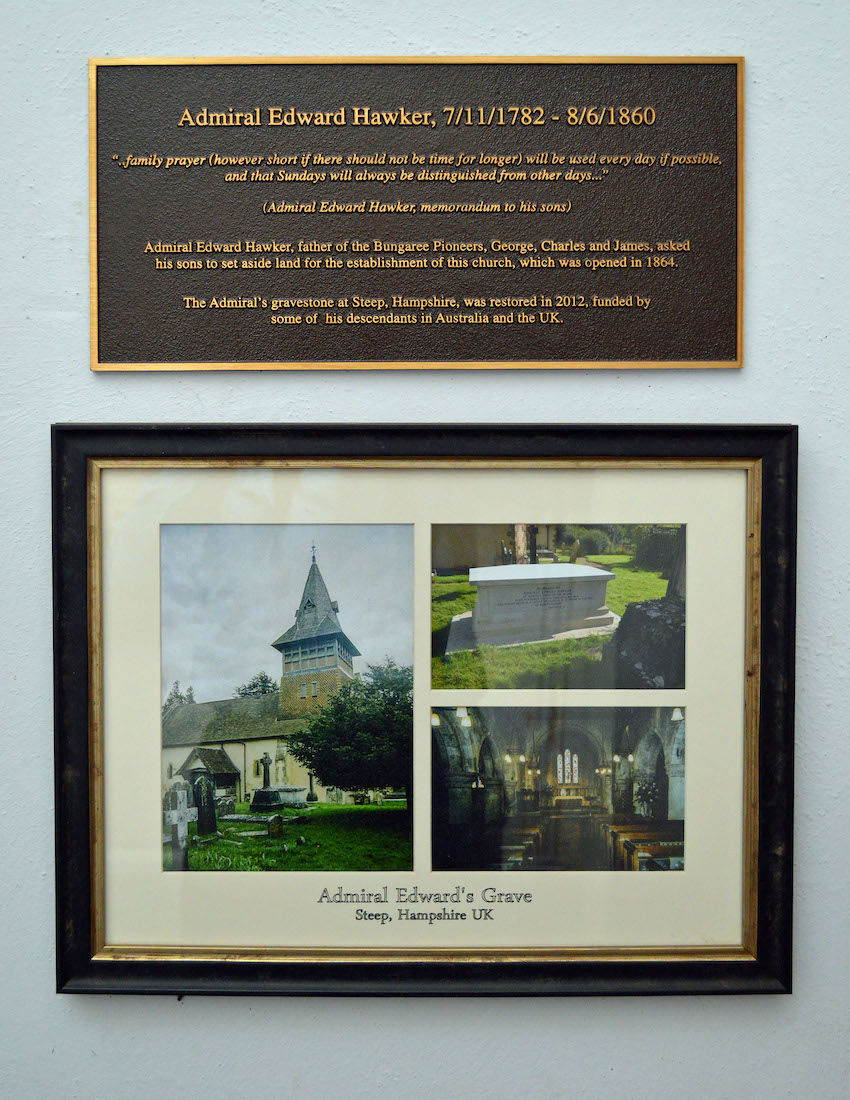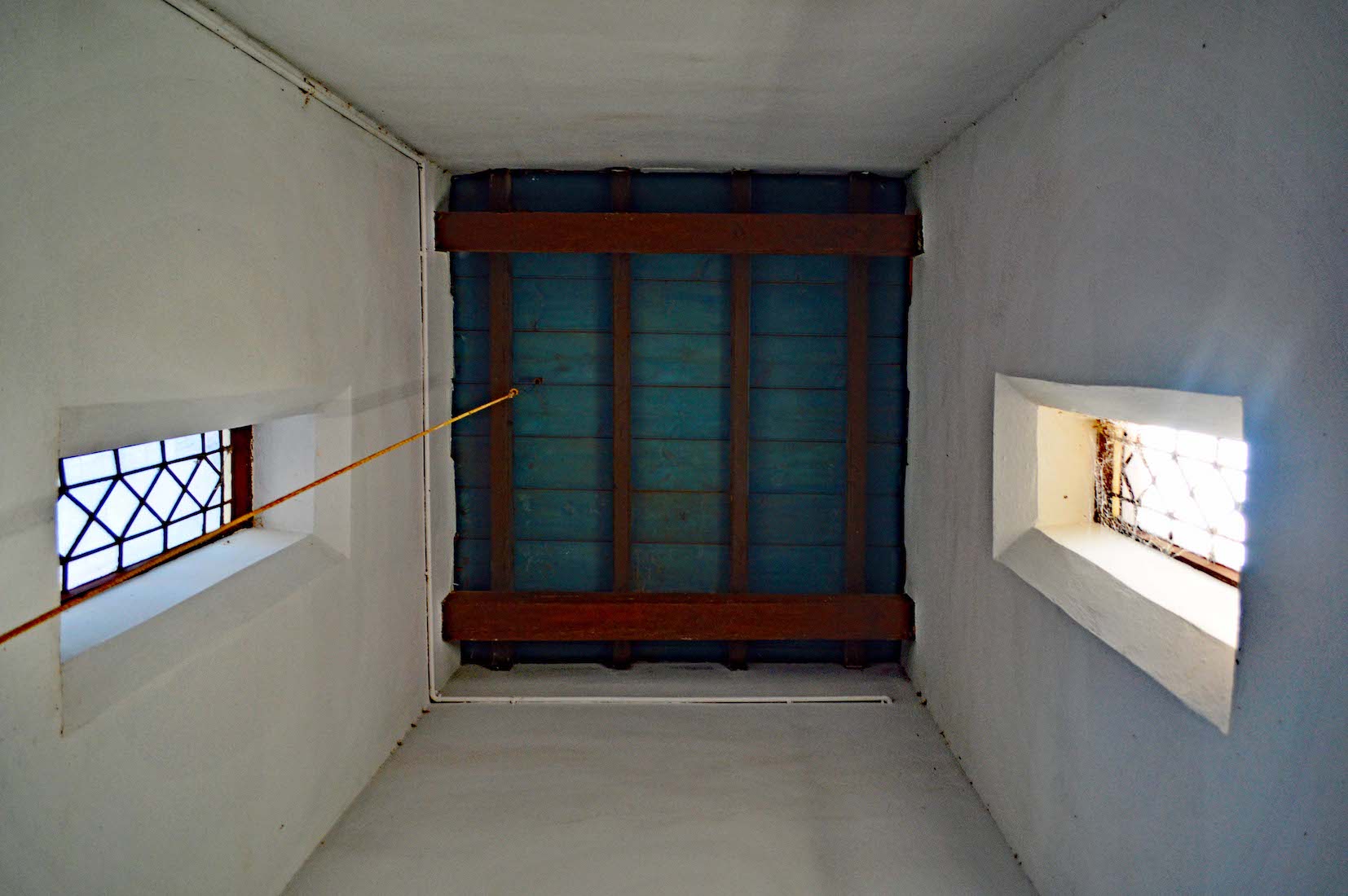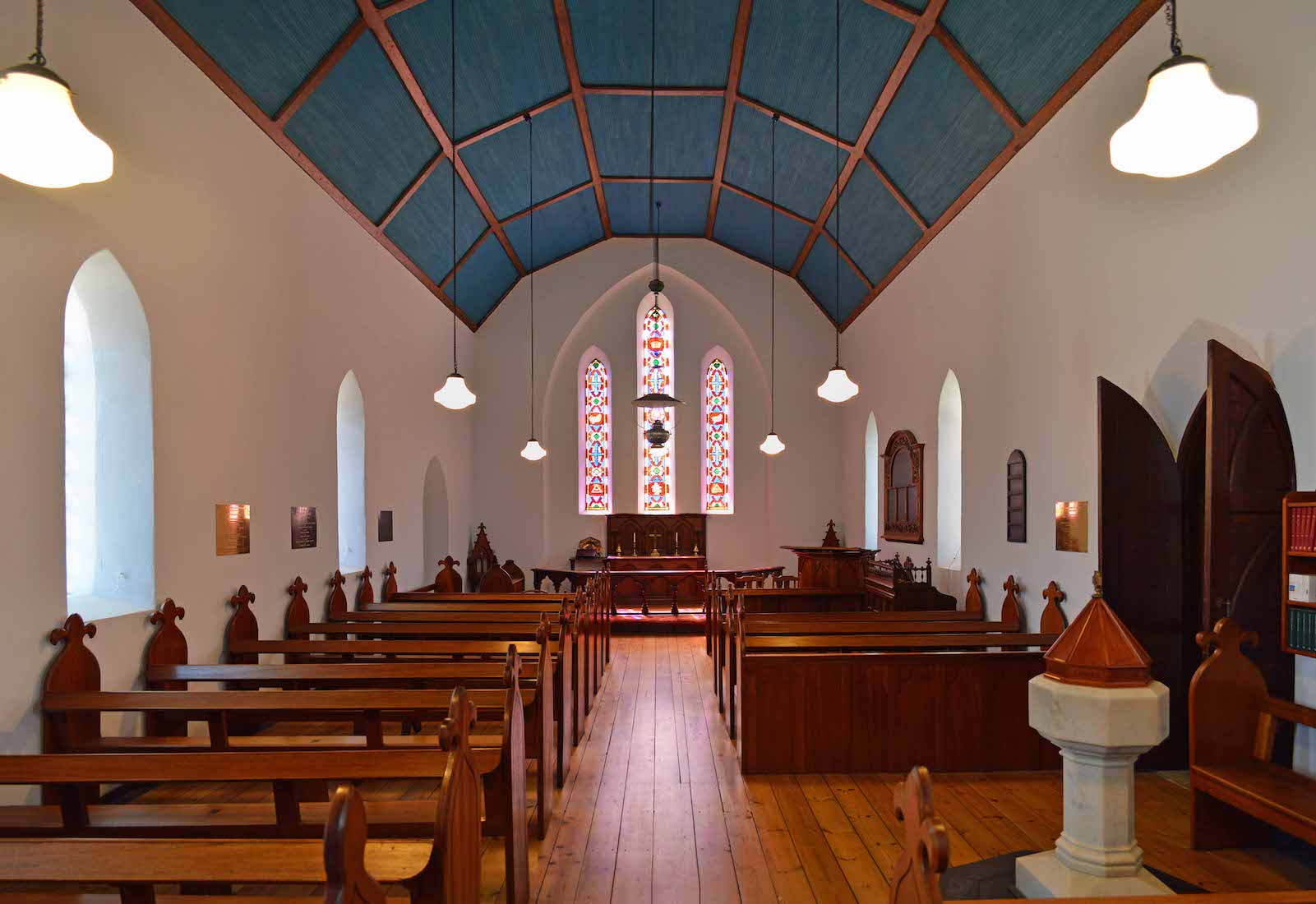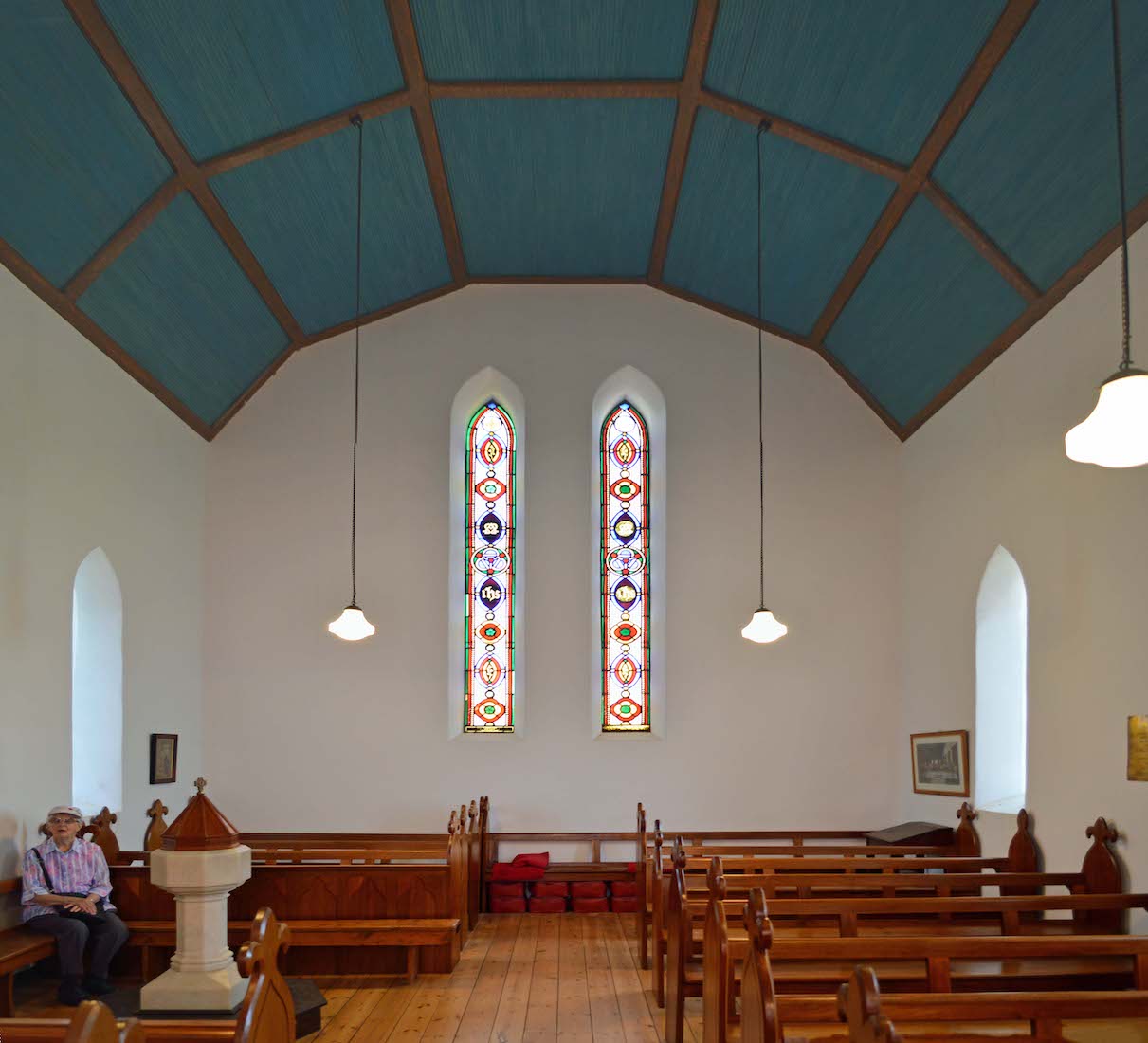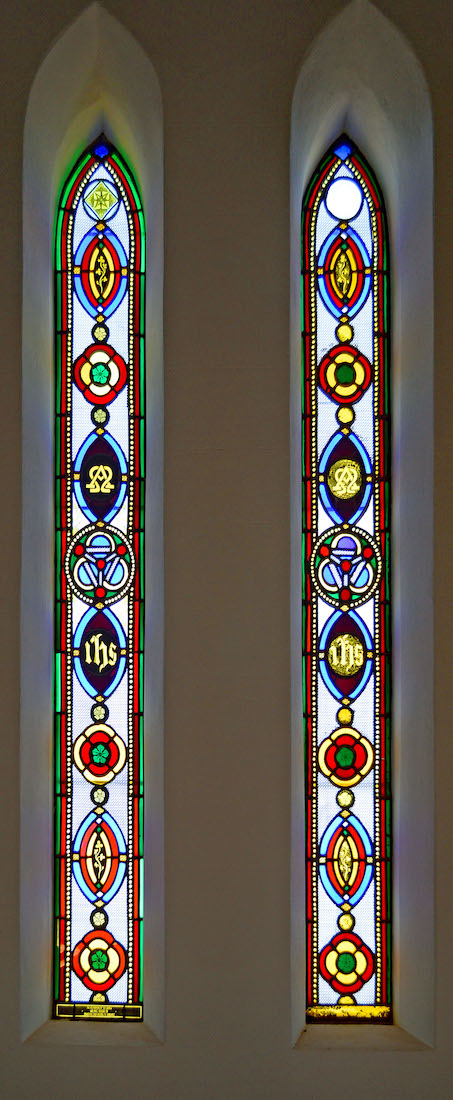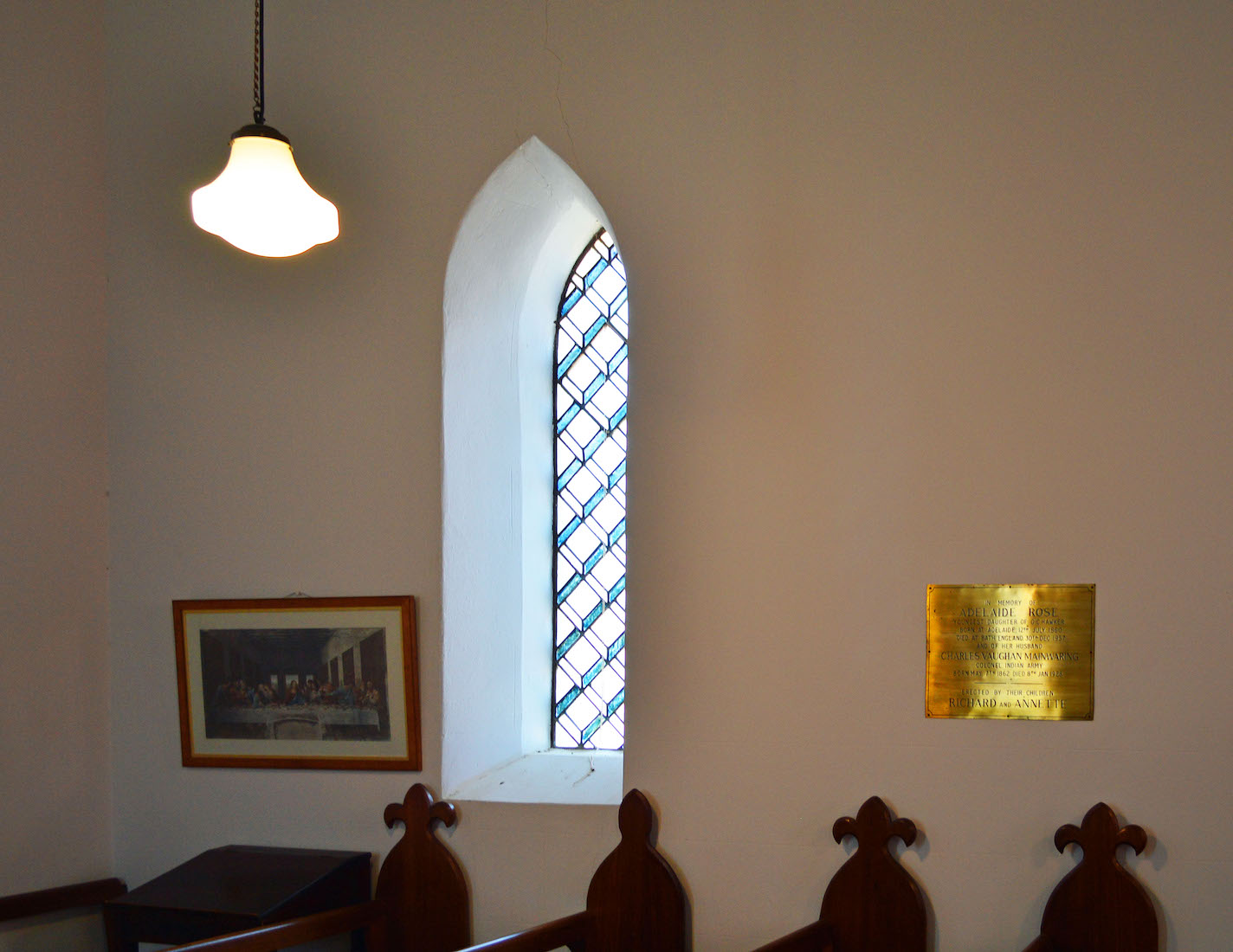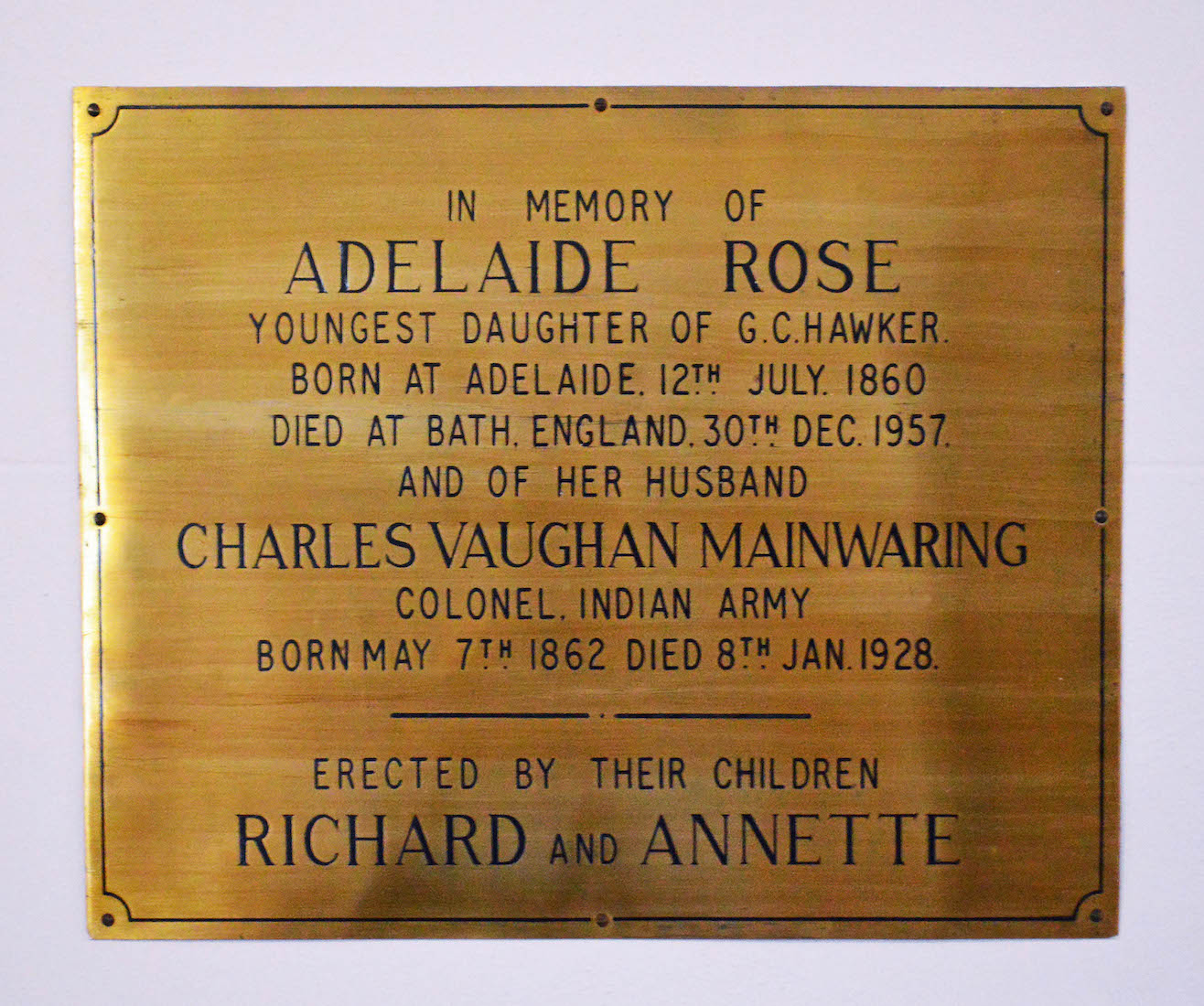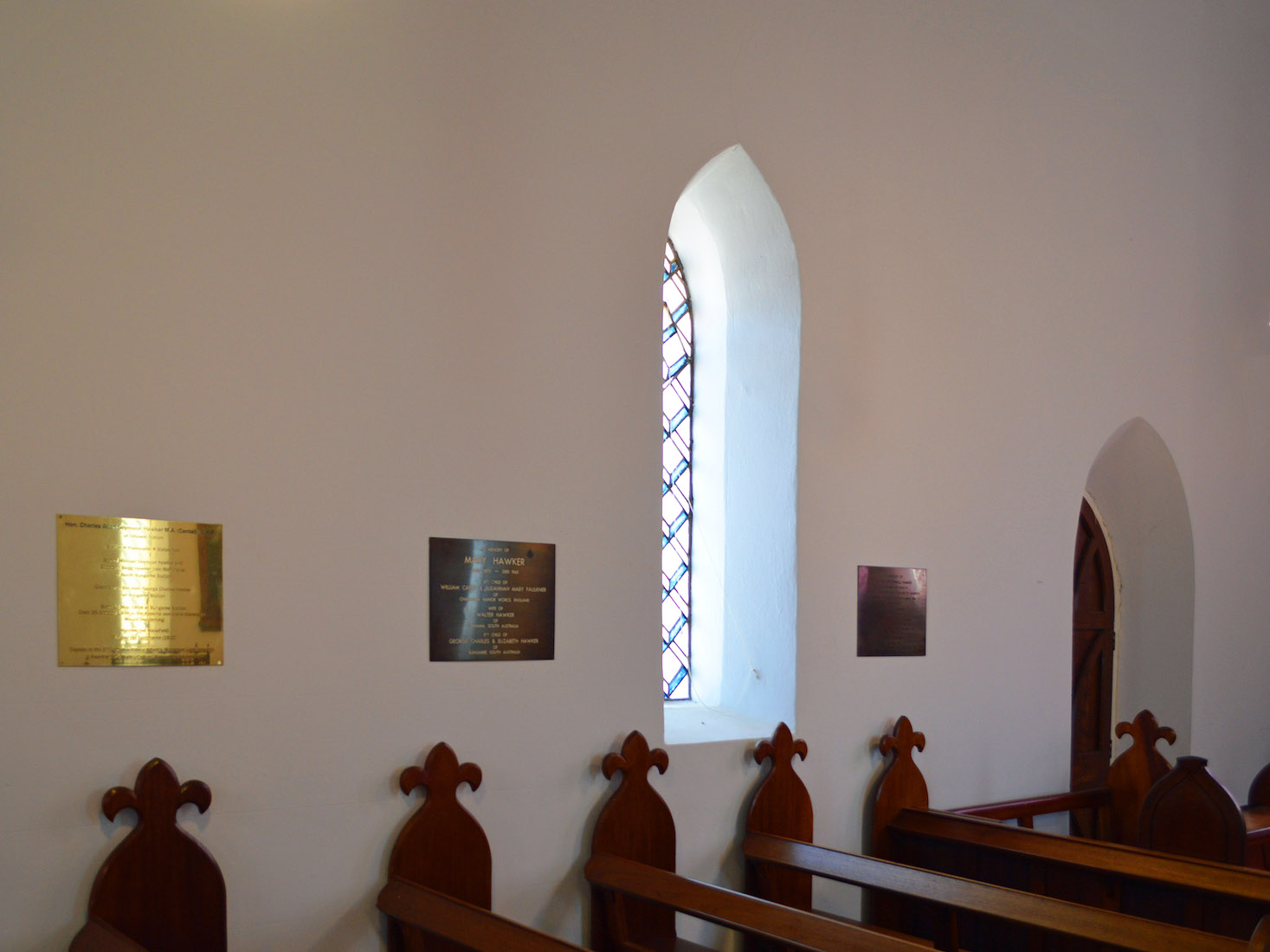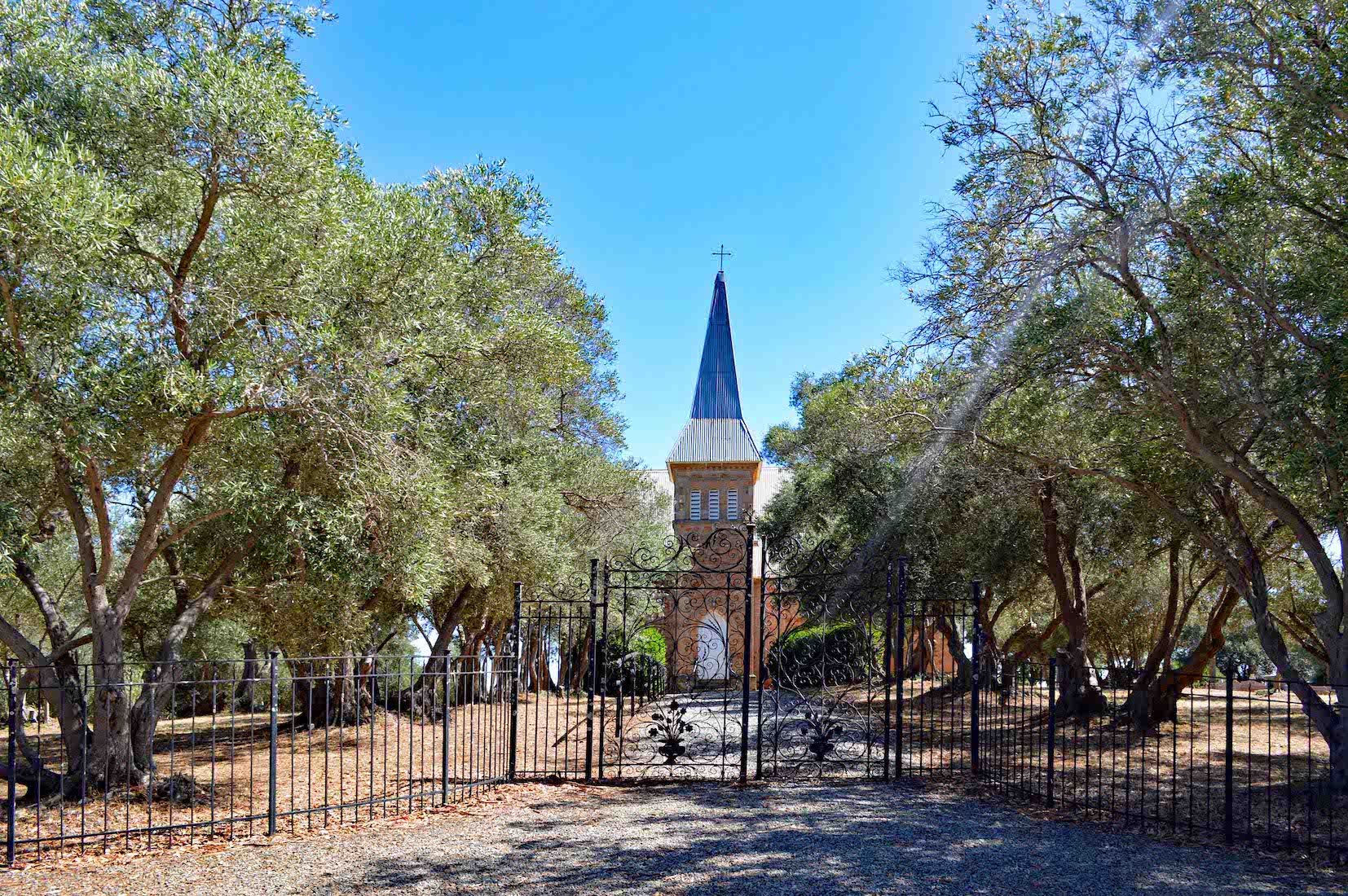
We travel some 13 kilometres north of the town of Clare, first on the Horrocks Highway, and then turning left onto Bungaree Road. The Station is well sign-posted on our right, and we actually pass the Church on our left as we proceed to Reception to get our Self-Guided Tour ticket. We then return to the Church. Car parking is easy, and we enter through a pair of smart wrought iron gates. INDEX
2. GATE DETAIL
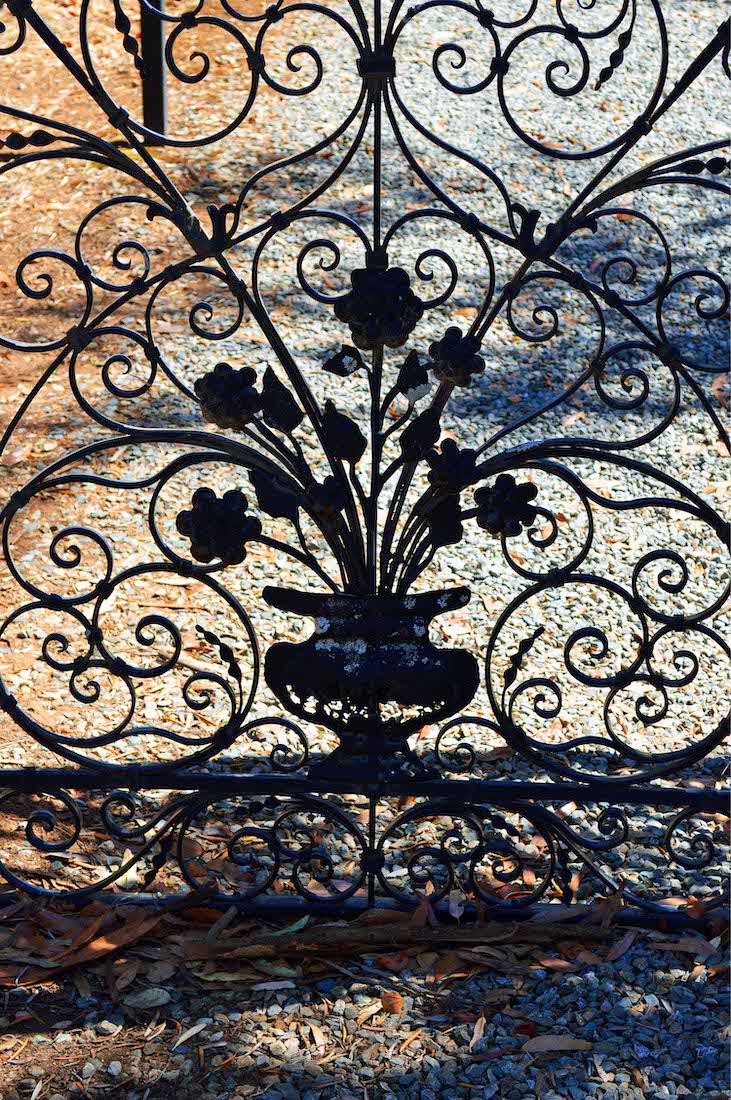
Adelaide Hawker donated a pair of handmade wrought iron entrance gates in 1950 to replace the original wooden gates. The historical record claims that the gates came from Milan.
3. TOWER AND SPIRE
The path to the Church leads directly to a door leading to an entry porch in the base of a square tower. This tower supports a spire with a belfry, and a simple Cross at the top. The Church is built of locally quarried sandstone.
4. SOUTHWEST VIEW
I was initially surprised at the orientation of this Church. The axis of the Church is almost exactly east-west geographically, with the sanctuary at the eastern end. This means that the geographical directions can be taken to coincide with the liturgical directions which we use, in which East (with a capital E) is defined to be the direction in which the sanctuary is oriented, and the other directions also coinciding. So the tower (and entry porch) abut onto the South nave wall near the Western end.
5. NORTHWEST VIEW
We continue our walk around the Church arriving at the North nave wall. In this wall there are three lancet windows, and a door at the East end. The stone blocks are cut uniformly and neatly delineated with straight lines of mortar.
6. NORTHEAST VIEW
At the Northeast corner we come to a number of graves and headstones. St Michael’s Church is very much a family chapel for the Hawker family, with family graves outside, and, as we shall see, family memorials inside.
7. CEMETERY FOUNTAIN
Amongst the graves at this corner is a flat paved area with a central fountain. The fountain was not functioning, but the design is interesting with the bowl supported by three small boys (cherubs?) acting the part of the proverbial three wise monkeys: ‘See no evil, hear no evil, speak no evil’. The column has text indicating the burials of two members of the Hawker family: Richard MacDonnell Hawker (1865 – 1930) and Adelaide Hawker (1876 – 1952). George Stanley Hawker and William Edward Hawker are also buried in this cemetery.
8. EAST VIEW
We continue our walk back around to our starting point, past the three-lancet East window. On the South wall, there are two windows visible this side of the tower, and one window on the far side which we passed earlier. There appears to have been some past maintenance work carried out on the lower part of the East wall.
10. PORCH
We negotiate the entry and find ourselves in a small square entrance porch. Next to the door is a little box labelled ‘Ember Pennies’! These appear to be coins which were set aside for the training of priests for the ministry. There are further interesting items on the wall at left.
11. SOPHIE CHAPMAN HEADSTONE
This old headstone is contained in a framed glass case on the porch wall. The text is difficult to read, but says: ‘ Sacred to the memory of Sophie Chapman, born Nov 7, died Nov 8 1877. I can find no reference to this child, but Edgar Chapman (1831 – 1886) was a brewer, pastoralist and theatre proprietor in nearby Clare.
12. EDWARD HAWKER
The plaque and photographs give interesting information about Admiral Edward Hawker (1782 – 1860) who was the father of George, Charles and James, founders of Bungaree. The setting aside of land for the Church and the opening of St Michael’s in 1864 was all in accord with Edward’s wishes.
13. PORCH CEILING
Standing in the porch and looking up reminds us that we are standing underneath the tower and spire. A rope bell-pull hangs down through the ceiling. There is a single bell which welcomes the congregation to regular services, as well as baptisms, weddings and funerals.
14. NAVE
The nave is attractive and pleasing to the eye. We notice the font in the foreground at right, the various plaques on the side walls, and the colourful East window and altar before us. The aqua ceiling panels above are attractive too. Flor later reference (#33) note the new shiny brass on the South wall (right).
15. WEST NAVE
Turning around, there are two more lancets on the West wall, and a framed picture on either side.
16. WEST WINDOW
The hand painted West window displays various Christian symbols. So we can see the Alpha – Omega symbol for Christ, a triangular symbol with circular arcs representing the Trinity, the IHS symbol for Christ, the Yorkshire Rose (usually white showing the purity of Mary) and others. The double lancet inscription at the bottom of the left lancet reads: ‘The restoration of this window was made possible by donations from visitors to Bungaree’. Original inscription on the right lancet is illegible.
17. NORTHWEST CORNER
We see here the West end of the North wall of the Church. A picture of The Last Supper, one of the criss-cross design side windows of the nave, and a brass memorial for Adelaide Hawker.
18. THE LAST SUPPER
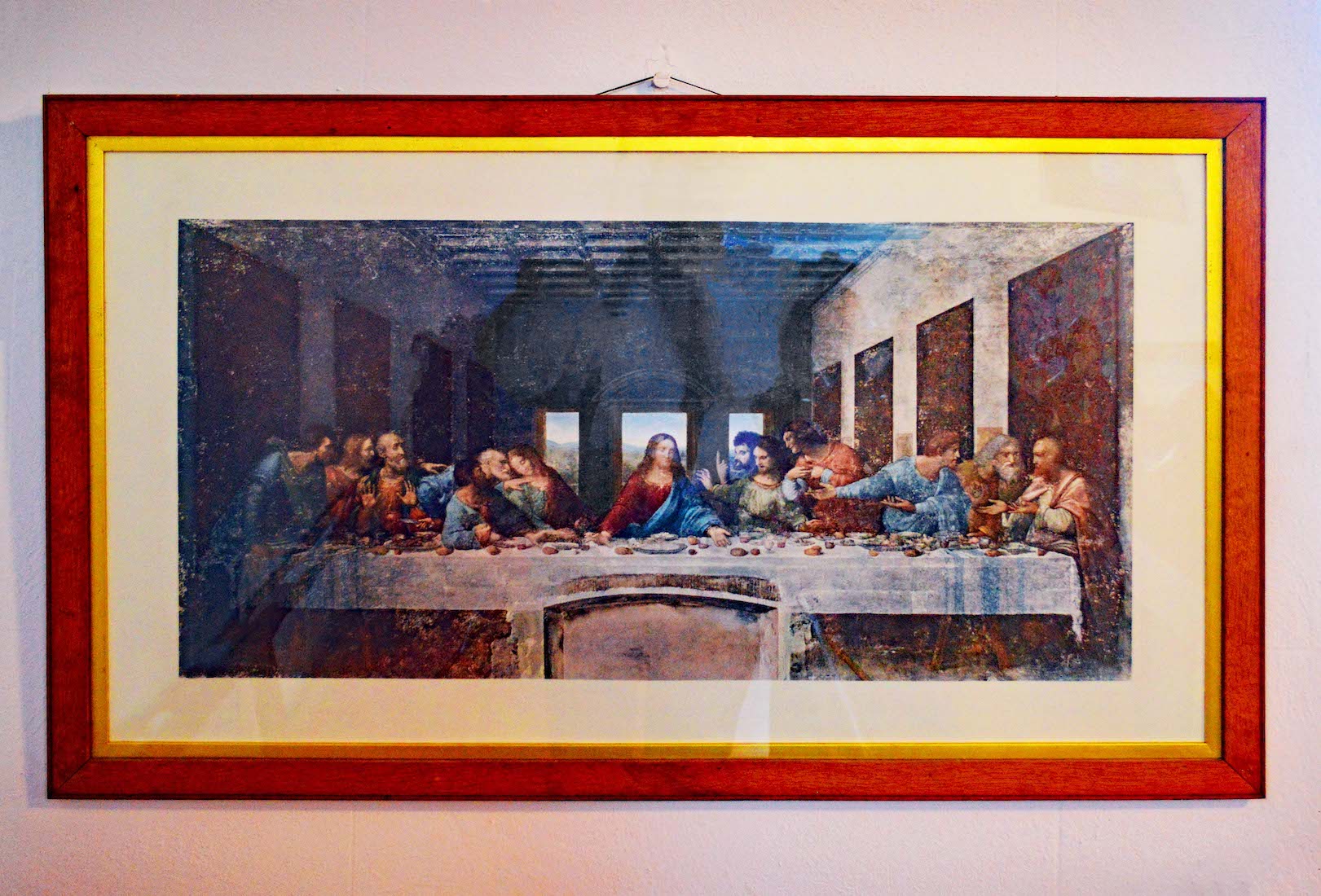
The Last Supper is a mural painting by the Italian Leonardo da Vinci, dated to c. 1495–1498. The painting represents the scene of the Last Supper of Jesus with the Twelve Apostles, as it is told in the Gospel of John – specifically the moment after Jesus announces that one of his apostles will betray him. There are many versions, with the original housed in the refectory of the Convent of Santa Maria delle Grazie in Milan, Italy.
19. ADELAIDE ROSE BRASS
The text of this plaque reads: ‘In memory of Adelaide Rose, youngest daughter of G. C. Hawker, born at Adelaide 12th July 1860, died at Bath England 30th December 1957, and of her husband Charles Vaughan Mainwaring, Colonel, Indian Army, born May 7th 1862, died 8th Jan 1928. – • – Erected by their children Richard and Annette’. They had three children: Frances Eleanor May, Ricardum Quintin Corolum, and Annetta Rose..
20. NORTH WALL
There are three plaques along the North wall, commemorating members of the Hawker family.


